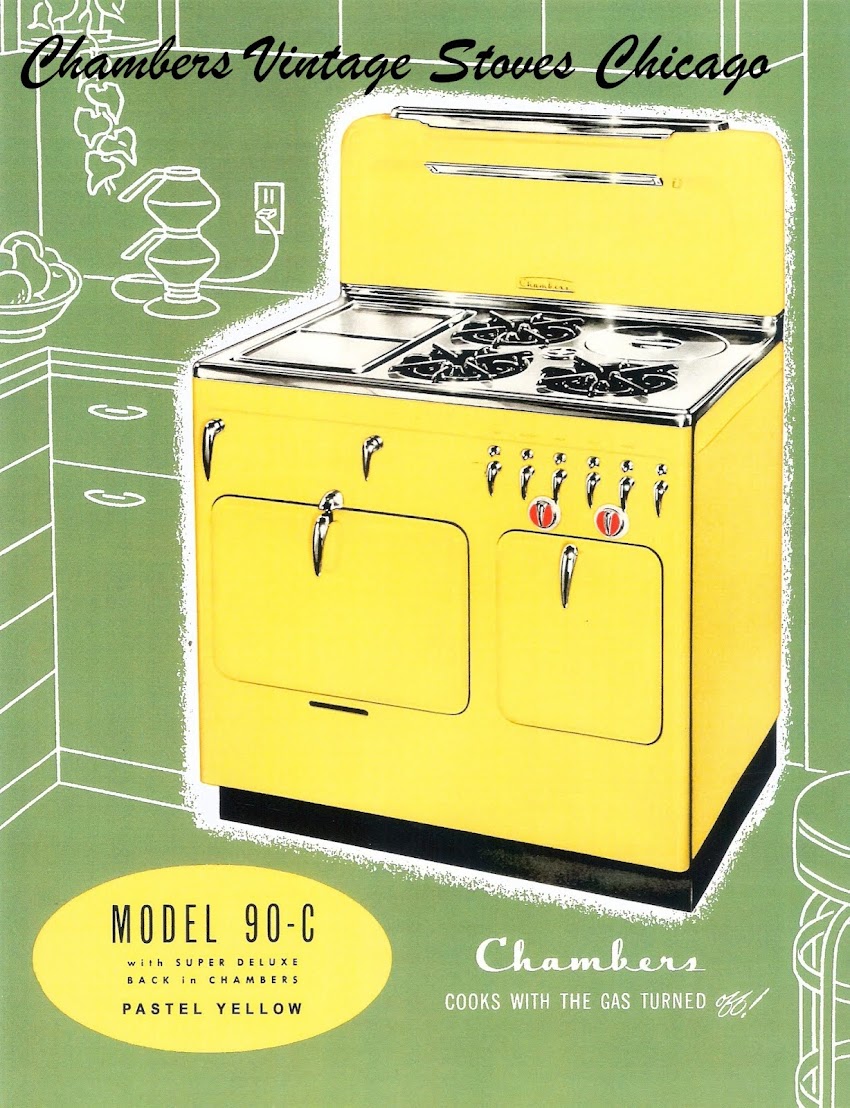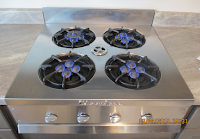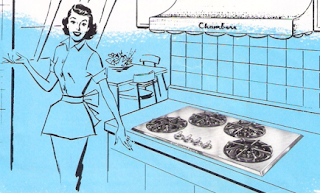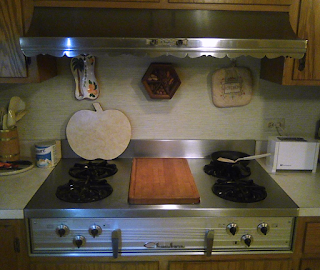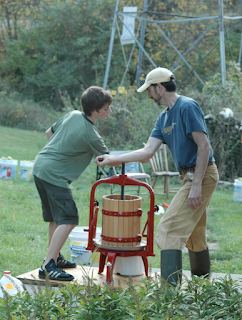For many owners of vintage stoves, including Chambers, the change can have drastic implications. This is due to the fact most vintage stoves built prior to the mid 1960's do not come equipped with built-in gas pressure regulators. People's Gas employees are directed to disconnect any stove not so equipped.
Here's the back story: All gas stoves and other gas appliances are manufactured to operate with a uniform standard pressure of gas: If that pressure is exceeded while the stove is being used, the burner flames will be drastically higher. If the stove is not being used, certain components of the stove, mainly the valves used to turn the gas on and off, can be overpowered and raw gas will escape past them and into your kitchen.
Avoiding this problem was originally the sole responsibility of the gas utility, which utilized the "gas supply regulator" installed on a home or apartment building. It's a disc-shaped device (about 10" wide) attached to the building's gas supply pipe just before it enters the building. You can see it in the photo on the upper left.
 Some old regulator installations are inside the building. There may be a meter between the regulator and the building, or the meter may be inside.
Some old regulator installations are inside the building. There may be a meter between the regulator and the building, or the meter may be inside. The purpose of the regulator is to "regulate" (decrease) the pressure of the gas from the high pressure "street" supply, to the lower standard pressure for a building's gas appliances. It also prevents any accidental "spikes" or "surges" of "street" pressure from entering a building's gas lines and appliances.
Since the mid 60's, all gas stoves (as well as furnaces and water heaters) must by law have their own regulators built-in for safety redundancy. The reasoning is this: if the utility company's supply regulator fails, allowing high pressure gas into your house's gas pipes, the stove's regulator prevents the surge from entering and overwhelming the stove's components.
Many old neighborhoods in Chicago still have low pressure gas supply systems that date from the original installations of the late 1800's to early 1900's. For various safety and efficiency reasons, those and many mid-century systems are being replaced with a new high pressure supply, and when they are being replaced, new exterior "supply" regulators and meters are being installed. It's at this point in the process when your vintage stove will be tagged and disconnected.
When the gas company upgrades a building, they must first turn off the gas supply, attach the new equipment, then turn the gas supply back on. Before they leave the building, the utility's personnel are required to enter each residence to relight any pilot lights on water heaters, furnaces, and stoves. They must also check any vintage stove to check to see if it has its own built-in regulator and modern flexible connector (stainless steel or plastic coated). If not, the stove is summarily disconnected, the supply to the stove plugged, and the owner is told that it cannot be reconnected until one or both have been installed.
Fitting a regulator to your Chambers is a fairly straightforward job that any plumber should be able to handle in an hour, two at most. If you don't have a modern yellow plastic coated flex line and an on/off valve between your stove and the pipe coming out of the kitchen wall or floor, now would be the time to update everything. You can buy all the parts for about $100, though regulators are not usually available at hardware stores: check professional appliance supply stores in your area.
Of course if you are not qualified to work on gas systems, leave this upgrade to a professional. If you need this work done and you haven't had your Chambers looked at in a while, please give me a call.
